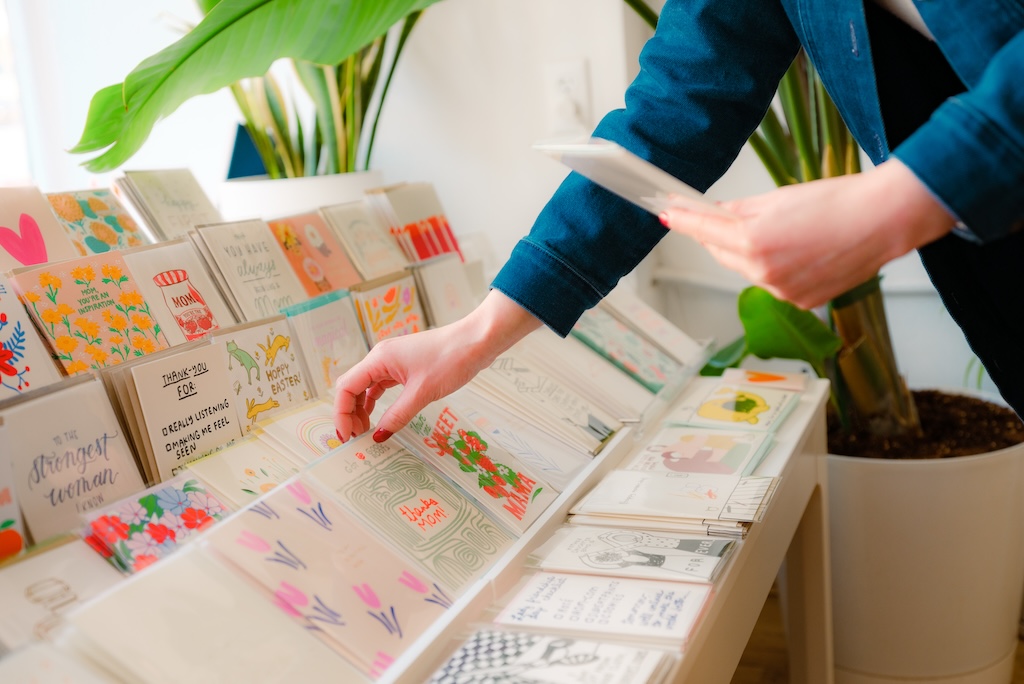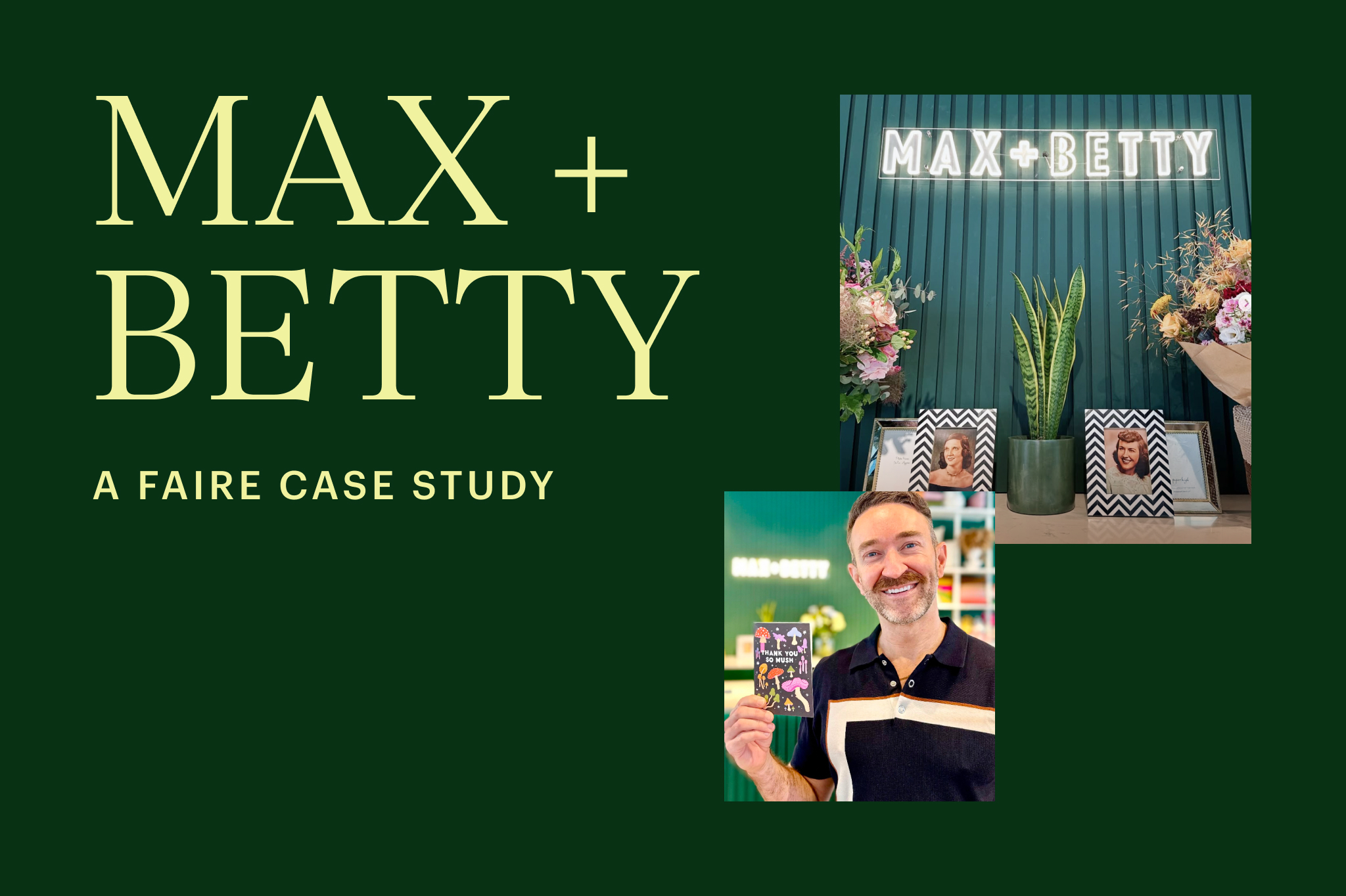

If you’ve started a retail business online, you might be curious about moving to a physical store. But leasing or buying a shop can mean risk or a heavy financial investment. What’s your move? Enter the pop-up shop.
Pop-up shops are short-term retail spaces that sell products for a limited time. They can last for a few hours or a few months and can be located anywhere from vacant storefronts to event spaces, even online.
The idea of a temporary retail site isn’t exactly new, but the modern pop-up has rocketed in popularity in the last 30 years. Its flexibility lets retailers reach new audiences and grow revenue without the overhead of a permanent address. The ephemeral nature of pop-up shops creates a sense of urgency and exclusivity, attracting customers who are eager to experience its unique offerings while they can. For retailers hoping to make a splash, pop-ups are a tried-and-true way to get noticed.
What are some fun pop-up shop ideas?
Pop-up shops can take many shapes and forms, and as a retailer, you’re only limited by your own creativity—and your budget. If you’re new to pop-ups, the infinite possibilities can be overwhelming. So here are 10 examples to help get you started.
- Celebrate a new product: Treat your newest product like the star of the show at a themed pop-up shop. Create an atmosphere of exclusivity, making customers feel like they’re part of something special and limited—think VIP access. You can even design your pop-up to match the theme of your new collection. If you’re launching a beachwear line, deck out the space with palm trees, a makeshift boardwalk, and tropical music for an immersive experience.
- Mark the change of the seasons: Use the changing seasons as a cue for themed sales. Tap into the season’s vibe, be it pumpkin spice vibes in the fall or floral themes for the spring, and roll out timely products or promotions. These thematic, time-limited settings create a compelling reason for people to shop right now. Not to mention, it’s a great excuse to celebrate.
- Lean into your community: Host an event or workshop that allows you to chat, chill, and create with locals. If you’re a jewelry brand, maybe you host a DIY jewelry-making workshop and teach folks about your craft. It’s about making friends, networking, and weaving your brand into the fabric of the community. This not only draws people in but also gives them a memorable, hands-on experience with your brand.
- Team up with other independent brands: Play matchmaker by teaming up with fellow businesses and local artists. These partnerships aren’t just fun—they also broaden your audience and create a shopping experience that’s fresh and thrilling. You can join forces with a local gym if you sell athletic wear or with a café if you’re in the business of books, custom mugs, or stationery. This could be a temporary setup inside the existing establishment, giving both businesses exposure to each other’s customer bases.
- Do good with a charity angle: Host a pop-up shop where a portion of sales supports a local charity. It feels good to do good, and customers love brands that give back to their communities.
- Create an Instagrammable photo op: Design your space with Instagram in mind, including eye-catching backgrounds. When your pop-up shop is picture-perfect, visitors can’t resist snapping and sharing their experience. You could even create a hashtag for your pop-up shop and offer a small discount to customers who post with it. This not only beautifies your space but also leverages customer networks for free marketing.
- Hit the streets with a mobile pop-up: Why wait for them to come to you when you can go to them? Transform a van, bus, or truck into a branded shop space and take your store on the road. The novelty of a mobile shop, especially one that’s creatively decorated to stand out, can attract passersby and provide the flexibility to target different demographics and different areas. From city streets to festivals, the world is your retail oyster.
- Host a clearance sale: Need to clear out last season’s styles or overstock? Set up a clearance sale pop-up to move merchandise that’s taking up precious space. It’s a win-win: better cash flow for you, and great deals for your customers.
- Feature special guests: Spice up your pop-up by inviting known industry experts or popular influencers who align with your brand. If you have a skincare brand, maybe you can invite a dermatologist to give consultations or beauty TikTokers to demo your product live. Whether they’re giving talks, leading a class, or just mingling with shoppers, their presence adds credibility and buzz, drawing in more foot traffic.
- Organize a “meet the founders” event: Use your pop-up as a stage to share your brand’s story directly with customers. Let them meet the minds behind the products, sharing the passion and story behind your brand. Set up a cozy, inviting pop-up where you can have casual talks with visitors, share your journey, and maybe show some behind-the-scenes photos or videos. This personal connection can turn casual shoppers into loyal fans.
What can pop-up shops do for the future of your business?
Everyone has different goals for launching a pop-up. Maybe you’re hoping to just get a bit of exposure and meet more of your customers in person. Maybe you want to soft-test a new product or a new creative direction. But for many, a pop-up shop is a great training ground for an eventual brick-and-mortar expansion. (Here’s an interview with brands that have already done it.)
A pop-up can give you a taste of what it’s like to have a physical store and provides tons of valuable insights to help you make informed decisions about a permanent location. No matter your aim, here’s what a pop-up shop can do for the trajectory of your retail business.
- Get to know your IRL customers: Pop-ups let you interact face-to-face with customers, giving you the chance to get their thoughts on your products, your branding, your messaging, and the overall shopping experience. This real-time feedback loop means you can make changes on the fly and show customers you care, potentially boosting brand loyalty.
- Collect sales data and market research: Your pop-up can be a treasure trove of data and information. By keeping track of sales figures, customer demographics, and buying behavior, you can get a better understanding of market demand, what customers want, and potential growth areas. You might notice a certain product attracts young parents or that another piques the interest of travelers. You can see if people tend to buy products paired with another product and use this to inform future bundling.
- Learn the ropes: If your goal is to have a permanent store one day, you likely know there will be many bumps on the road there. Pop-ups can get some of those early hiccups out of the way so they aren’t a surprise. You can test different aspects of your operations, like store layout, staffing, pricing, and marketing strategies. By experimenting in a real-world setting, you can fine-tune your operations, find efficiencies, and address potential issues before committing to a permanent location. (Here are some more tips on how to execute your pop-up display!)
- Scout the perfect location: The flexibility of pop-ups means you can try out different locations, different neighborhoods, and see what works best for sales. Consider foot traffic, accessibility, demographics, and the presence of competition. Through this process, you can decide if the ideal location for a brick-and-mortar is inside a mall, near a bustling downtown office park, or on a main street in your neighborhood.
- Nail down your budget: Whether your pop-up performs well financially or underperforms, there are lessons to take away. By analyzing sales, expenses, and profit margins from your pop-up, you can figure out if a brick-and-mortar store makes financial sense. This real-world financial data gives you a clearer picture of potential revenue, helping you mitigate risks and avoid costly mistakes.
- Build brand awareness: A well-executed pop-up can create a memorable and immersive brand experience, leaving a lasting impression on customers and setting you apart from the competition. This increased brand awareness can lead to greater customer loyalty and possible long-term growth.
Pop-ups aren’t going anywhere
Despite the name, pop-up shops are here to stay. Pop-ups have become a strategic tool for retailers to test the waters, engage with customers, and grow their businesses. From building brand awareness to gathering crucial market research, the benefits are undeniable. And with endless creative possibilities, the pop-up shop format offers a unique and exciting way to connect with your audience and shape the future of your retail business. If you’re ready, take the plunge and see what opportunities pop up for your brand.




